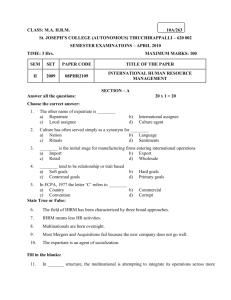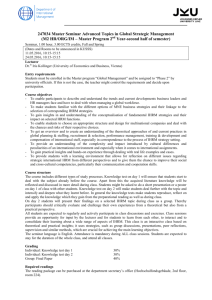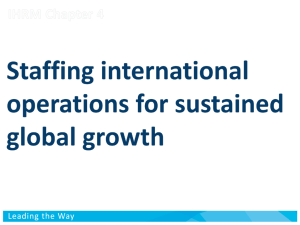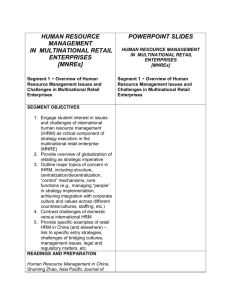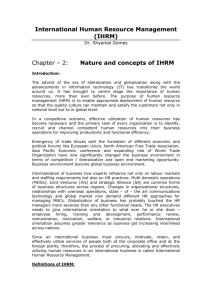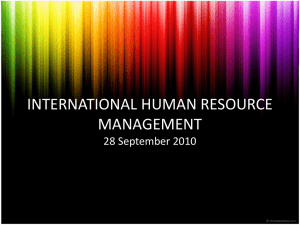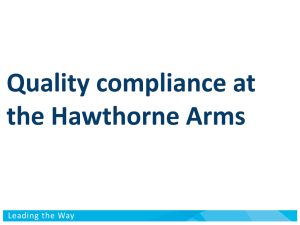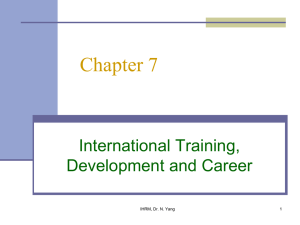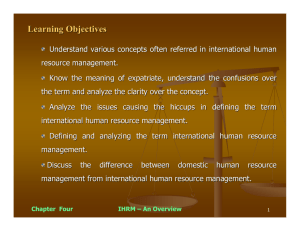Chapter3r
advertisement
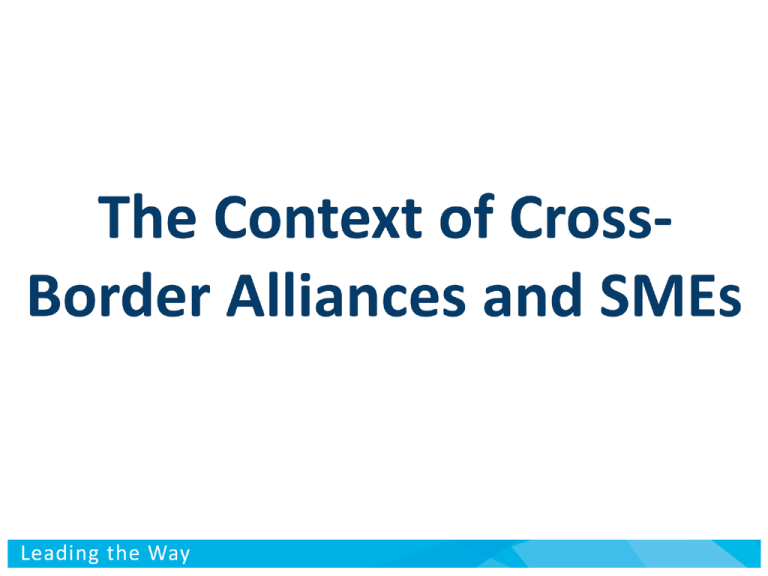
International Human Resource Management Managing people in a multinational context Chapter Objectives We learn about: • Global perspective on IHRM with external partners • Cross-border alliances • Equity-based alliances (M&As, IJVs) • Globalizing SMEs IHRM Chapter 3 2 Figure 3-1 Equity and non-equity modes of foreign operation IHRM Chapter 3 3 Figure 3-2 The formation processes of M&As and HR challenges IHRM Chapter 3 4 Typical cross-border M&A problems 1. Within first year of merger, up to 20% of executives may be lost. Over a longer time frame, this tends to increase even further. 2. Personnel issues are often neglected. 3. A high number of M&As fail or do not produce the intended results. IHRM Chapter 3 5 Figure 3-4 Impact of the human integration and task acquisition on acquisition outcome IHRM Chapter 3 6 Figure 3-5 HR activities in the phases of a cross-border M&A IHRM Chapter 3 7 Table 3-1 Post-acquisition trends in HRM practices IHRM Chapter 3 8 Figure 3-6 Formation of an international equity joint venture IHRM Chapter 3 9 The main reasons for engaging in an IJV 1. 2. 3. 4. 5. 6. 7. To gain knowledge and to transfer that knowledge Host government insistence Increased economies of scale To gain local knowledge To obtain vital raw materials To spread the risks (e.g. share financial risks) To improve competitive advantage in the face of increasing global competition 8. Provide a cost effective and efficient response forced by the globalization of markets IHRM Chapter 3 10 Figure 3-7 IJV development stages and HR implications IHRM Chapter 3 11 Table 3-2 SME definition IHRM Chapter 3 12 Top 10 barriers to international markets by SMEs 1. Shortage of working capital to finance exports. 2. Identifying foreign business opportunities. 3. Limited information to locate/analyze markets. 4. Inability to contact potential overseas customers. 5. Obtaining reliable foreign representation. 6. Lack of managerial time to deal with internationalization. 7. Inadequate quantity of and/or untrained personnel for internationalization. 8. Difficulty in managing competitor’s prices. 9. Lack of home government assistance/incentives. 10. Excessive transportation/insurance costs. IHRM Chapter 3 13 Figure 3-8 SME employer image and internationalization IHRM Chapter 3 14 Figure 3-9 Learning in small organizations IHRM Chapter 3 15
